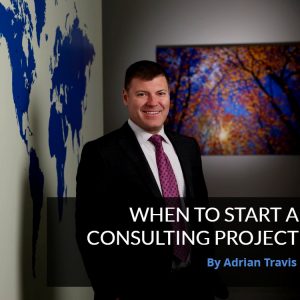Managing Change
Many organizations fail to plan or include several critical components when implementing changes to their operations. As a result, even the simplest of changes often encounter resistance, significant delays, and fail when being executed. A Management Consultant’s ability to strategize and create buy-in from key stakeholders often determines the likelihood of successful change management.
Customizing the Balanced Scorecard
Translating a comprehensive set of objectives into performance indicators is difficult.
The Balanced Scorecard Overview
Originally designed by Norton and Kaplan and now utilized in one form or another by most Fortune 500 companies, the Balanced Scorecard is a powerful tool in defining what management means by “performance” and measures whether management, business units, or individuals are achieving desired results. Companies such as Exxon Mobile, Bank of Scotland, and American Express have comprised customized Balanced Scorecards to help measure the overall health and gain a better understanding of how their core activities align with their strategy. Ultimately, the Balanced Scorecard translates mission and vision statements into a comprehensive set of objectives and performance indicators that can be quantified.
Scenario Planning
Scenario Planning is a tool that helps an organization evaluate various project outcomes based on possible future circumstances and make the decisions most appropriate to them. Rather than predict the future, scenario planning assists the organization consider many different futures and quantify how they might impact the organization’s key drivers. Although sceptics could argue that this is a very subjective process, the fact is that most organizations do not handle uncertainty well and scenario planning is a tool to help management begin discussing, considering, and quantifying the impact that possible future events could have on their business.
Hospitals and Airports Have More in Common Than You Think
I was talking with the CEO of a hospital last week about the ongoing challenges of delivering high quality of care to an ever-increasing volume of patients, simultaneously being forced to lower costs. He told me that hospitals are now facing the same challenges that airports have been struggling with for years. You might think to yourself, what do hospitals and airports have in common? Well, here it is... there's an increased number of travelers utilizing the same number of airports, gates, and runways, with the airlines under tremendous pressure to control costs while putting safety above all else.
He then described some of the operational improvement initiatives that he wanted to focus on during the next several years. They included:
- optimizing his operating room utilization,
- reducing cancellation and no-show rates for therapy services,
- increasing productivity across all functions, and
- decreasing patient length of stay.
He drew another comparison to hospitals and airports related to support services. Hospital patients depend on timely lab test results, error-free filling of prescriptions, flawless communication between a myriad of care providers, and an efficient planning and scheduling system for treatment. To deliver an excellent travel experience, airports depend on baggage handlers, maintenance teams, airplane fuel delivery personnel, food service providers, and perfection when it comes to communication between the pilots and air traffic control.
I was reflecting on this conversation several days later and had to admit that many challenges facing hospitals and airports are indeed similar. Both need to figure out how to do more with less.
This blog was written by Sally Ryberg, Executive Vice President at Trindent Consulting. She has over 15 years of consulting experience working with large global organizations to identify and implement profit improvement strategies. In her current role, she works with executives and senior leaders to identify solutions to complex business issues. She also provides direction and leadership to the business development team.
Six Sigma – What’s Needed to Succeed

Six Sigma, the popular methodology for process improvement, is a statistical concept that identifies the variation inherent in any process. By subsequently working to reduce these variations once it defines them, the Six Sigma methodology diminishes the opportunity for error, thus reducing process costs or increasing customer satisfaction.
The core objective of Six Sigma is to implement a measurement-based strategy that focuses on process improvement and variation reduction. At a high level, this is accomplished through the use DMAIC, an improvement cycle (define, measure, analyze, improve, control) [Note to draft: Link to Six Sigma: Striving for the Perfect Process blog] for existing processes that lack efficiency, and the statistical representation of Six Sigma, which describes quantitatively how a process is performing.
There are, of course, many proven methodologies an organization can consider for process improvement. So, why should they use Six Sigma, and what do they need to make sure they succeed?
When to Use Six Sigma
Given the similarities between continuous improvement methodologies, it can be difficult to determine which one is right for a given situation. To help organizations make that decision, the Six Sigma Council outlines the following scenarios, and the benefits of Six Sigma can bring to solving each one.
When facing the unknown – A process is operating out of control but the problem causing the deficient output is not known.
Six Sigma looks for potential causes and using sigma level calculations prioritizes them. It then sets up the framework to resolve the causes and get to a solution.
When problems are widespread and not defined – The problems in the process are known and understood, but the scope of the solution is not defined, leading to constant scope increases and lack of viable solutions due to their unmanageable size.
With control measures in its methodology, Six Sigma stays clear of unmanageable scope escalations in favor of incremental improvements over time.
When solving complex problems – A problem with many variables causes a complex process, where it’s challenging to identify an approach, definition, and measure for a successful outcome.
Due to its statistical basis, Six Sigma can handle problems that contain large amounts of data and variables, deciphering them to give hypotheses, premises, and conclusions to base changes on.
When costs are closely tied to processes – A process that has a high cost risk due to its very small margin of error – where one incremental change can translate to millions of dollars of loss or gain – requires solution accuracy before implementation.
Six Sigma leans on its statistical process control to create assumptions, therefore when implemented properly, this method is significantly more accurate than its alternatives.
Success in Six Sigma
The Six Sigma method is not without its challenges, of course.
To be successful, Six Sigma requires support – primarily in the form of resources and data – at all levels of an organization. Adequately staffed engagement teams with necessary levels of subject matter expertise are a must for positive results, as is access to consistent and accurate data streams to enable calibration factors and the capturing of necessary KPIs – crucial to data outputs value.
But ultimately, taking advantage of how customizable this approach is to fit your industry and organizational needs will be the key to successful process improvement.
Is It the Right Choice for You?
When starting on a process improvement initiative and considering the Six Sigma methodology, it is important to have all the information first. Knowing when this method is best applied can set you on the path to operational process perfection.
The Six Sigma methodology has been adopted by top operational excellence consulting firms, including Trindent Consulting. Click here to learn more about how we can work with you to utilize this valuable tool in driving the efficiency of your organization.
Solving Problems Quickly: There’s a Right Way

No one knows an executive who doesn’t have a packed
schedule. Executives are constantly
under time pressure, and so it’s their ability to make good decisions quickly
that makes them successful in their job.
Making quick decisions can be a double-edged sword
however. There are risks and pitfalls to
solving problems this way, but as any successful executive will tell you,
there’s a solution for that.
What Can Go Wrong
A number of factors can prevent quick decisions from being sound. Subconscious biases and heuristics can guide thinking in the wrong direction when under time constraints. When trying to solve a complex problem, insufficient information can become a stumbling block, and insufficient analysis can come into play when there is enough information available, but it’s not properly analyzed or applied.
Erroneous decisions are rarely caused by just one of these
factors. It’s usually some combination
of them that leads to errors in solving problems quickly.
Taking the Right Approach
What is the solution, then, for avoiding the dangers
of making quick decisions? There are a number
of problem-solving frameworks used the business world and while they may differ
to some extent, they all have several core elements in common:
- Define the issue.
This is often the most difficult part of
the problem-solving process, as there may not be recognition a problem exists, let
alone a clear definition of what it is. Defining the problem should include an
understanding of the desired objectives of any solution. - Measure.
This step assesses the available
information. Here, more is not always
better. The information at hand needs to
be relevant to the problem, and it needs to contain a sufficient level of detail
to allow for proper analysis. - Analyze to
identify root causes. This step analyzes the available (and
correct) information to get at the root causes of the problem. While discussing analysis tools out of scope
of this article, it’s worth mentioning that whatever analytics are used, they should
be the appropriate ones to the problem at hand. - Generate and evaluate solutions.
By this point, there should be a clear
understanding of the problem and its underlying causes. Any solutions now being considered need to
address these causes, be measurable, and have some cost-benefit analysis to
help make an informed choice between alternatives. - Implement.
If the previous steps were carefully followed,
there should be a clear plan of action now in place, including
responsibilities, targets and deadlines.
This is the point where the plan should be implemented. - Control.
This is the sustainability part
of the problem-solving process, where post-implementation KPIs are tracked against
targets, and variances are addressed.
The common characteristic of every framework, however,
is that it does not fit every situation.
This is one of the areas where Trindent Consulting can bring value to your organization. Our proven approach to identifying underlying issues and defining solutions are at the core of our passion for solving complex problems.
Feeling the Burnout?

Management consulting is an excellent stepping stone for career development as it exposes consultants to multiple industries and functions, while the steep learning curve pushes them to develop transferable skills such as problem-solving, leadership, and communication. However, the industry also comes with a reputation for its long hours and a challenging work-life balance. It is typical to see consultants leave after two to four years in pursuit of a more sustainable lifestyle; hence, some individuals marvel at those who have stayed in consulting throughout their careers. But do tenured consultants need to be a rare breed? Does the stigma associated with their job mean that they do not value their personal wellbeing? While we may have different perspectives on how to prevent burnout, here are my thoughts based on personal experience and conversations with Partners and Principals at several firms:
Speak your mind
No one knows your situation better than you. Unless you speak your mind and let your team know about your constraints or wellbeing, it may be assumed that there are no issues. Perhaps you have a newborn baby, or a family member who needs additional care; clearly, what may have worked six months ago may not work now. If this is the case, voice your concerns to collaboratively set boundaries and non-negotiables with your manager. What often holds us back is the fear of consequence – but most managers that I have spoken to truly care and will make efforts to accommodate your needs given reasonable notice. Furthermore, if you are not directly involved in staffing decisions, let your manager know what interests you. Working on an engagement with a business objective that you are passionate about solving will deliver quality and a sense of achievement that can help prevent burnout.
Take a break
We often hear “I don’t have time to use up my vacation days”. To prevent such a scenario, it is helpful to plan your time off at least six months in advance. Not only does this allow appropriate resource decisions, but it can subconsciously allow you to pace and schedule work accordingly. If an extended vacation is not feasible, make an effort to take a break each day – it is also a good opportunity to learn more and develop new relationships with your coworkers.
Find someone to talk to
Whether it is your manager, development leader, or career advisor, find someone in your firm that you can speak to. Seek out connections and rich interpersonal interactions that can also help drive your professional development. It is also likely that there are others in your organization or your team that is facing similar difficulties – band together and offer mutual support to increase your sense of control and connection.
Identify stressors
Whether it is a client, colleague, deliverable, or even a family member, identify stressors and prioritize high-value activities and relationships. Set expectations and communicate what you can manage to improve productivity while managing workload. Furthermore, put yourself in your client’s shoes – what you may find important, yet stressful, may not be what is important to the client. Finally, eliminate stressors by knowing when to say no. With overwhelming demands, saying no can be the right answer and it takes courage and conviction.
The author of this blog Kevin Kim is an Engagement Manager at Trindent Consulting.
Hidden Opportunities to Enhance Your Margin
We are pleased to share a new article titled, Hidden Opportunities to Enhance Your Margins, written by our very own, Stephan Rajotte, Executive Vice President and Global Financial Services Leader. The article is featured in the March 2016 issue of Asia Insurance Review.
Read how improving human capital efficiency is an effective way to increase margins and how it will be a key to Asia's success.
About Asia Insurance Review
The Asia Insurance Review publishes breaking insurance industry news. It was first launched in January 1991 to meet the information
needs of insurance practitioners in Asia. It is now considered the premier professional regional magazine.
This article first appeared in the March 2016 edition of Asia Insurance Review.
When to Start a Consulting Project
By Adrian Travis, President
When I meet with executives, the notion of ‘the right timing’ frequently comes up as a question as part of the scoping and structuring process. While there’s never a convenient time to undergo an intensive consulting project that is going to challenge staff and drive business results, there are some relatively good pointers that I can provide. In deciding when to engage in a consulting project, an executive’s prime consideration should always be maximizing the likelihood of a project’s success.
First, a good question to ask is whether your consulting partner has the right people available. Often projects generate sub-optimal returns because a client is in a rush to meet an artificial deadline, or feels pressured to engage by certain point in time – to placate upper management, to meet the constraints of a particular fiscal year, for example. Take the time to ask your consulting partner when the ‘best possible’ staffing scenario would be from their perspective. The relationship should be a two-way dialogue. You should seek to have not only the most seasoned consultants on your project, but also the ones who are motivated and would enjoy the particular consulting assignment. If a consultant is slightly out of their element, or might not be a match for the particular working culture, or geographic location for the project, you can expect lesser results. Be wary of any consultancy that can accept a project on short notice. Strong consultancies have good people and a backlog of work, and typically book their teams three to six months ahead – because there is demand for their expertise. You wouldn’t trust a roofing or plumbing contractor who could start work immediately, would you?
Second, steer clear of starting a consulting engagement in the summer, or immediately preceding the holiday season. While most workplaces never stop, there are some periods of time in the calendar year that significant involve staff vacations, and may slow the pace of delivery on any consulting project. Consulting teams need unfettered access to your staff, and enough people in the workplace to get things done. Also consider the vacation schedules of the consultants staffed to your project – ideally they should be focused on the project.
Third, ensure the setup is done right. A well-run consulting project involves advance data collection, nuanced stakeholder communication, and ensuring that there’s a very clear set of operational and financial objectives for the project. Part of this process is meeting with your consulting partner enough so that there is a clear understanding of the particular problem, and your business objectives. Always ensure that your staff are thorough and careful in providing the right data and information.
The makings of a successful consulting project are rooted in good preparation. If you ensure there’s a good project team on your assignment, ensure that your people are 100% available and engaged in the process, and there is enough time for proper setup and diligence, you stand a much greater likelihood of a resounding success.
The Willingness To Change Operating Workflow

Most hospitals define turnaround time as previous patient ‘wheels out’ to the next patient ‘wheels in’ – where ‘wheels out’ and ‘wheels in’ are the exact times that a patient bed rolls out of or into an operating room (OR). This is a key metric in determining OR efficiency, as long turnarounds reduce available operating time and longer-than-planned turnarounds cause OR delays. Because this is so important, most hospitals know what their OR turnaround times are and if they are increasing or decreasing. What many hospitals rarely have visibility into, however, is why their turnaround times are moving. This is because most hospitals only record their ‘wheels out’ and ‘wheels in’ times. While this provides them their total turnaround time, it fails to provide visibility into how each step in the process is performing. We believe that breaking turnaround time into three areas – namely: clean time, preparation time, and delay time – allows for a complete picture into why turnaround times are changing, and most importantly: where they are changing.
Clean time
Also called turnover time is the amount of time it takes to clean the room from the previous surgery. Hospitals generally manage this area very well, as leadership often thinks this is the key to reducing their turnaround times. Although these times are rarely regularly recorded in a hospital, this area, somewhat surprisingly, has the smallest opportunity area for improving turnaround time since it often has the most policies, procedures, and guidelines surrounding it – not to mention hospitals are subject to certain constraints regarding critical cleaning chemical instructions.
Preparation time
Refers to the amount of time it takes to bring in and arrange the bedding, instrumentation, equipment, and all the other supplies required for the next surgery. This time is more variable as it is more unique to the type of case being conducted. For example, vascular and orthopedic cases have much more complicated equipment requirements than general surgery cases (hernias, for example) and, therefore, take much longer to prepare. In the current environment of updated preference sheets and tray optimizations, it has become a very routine task to set up a room for any type of surgery.
Delay time
Delay time is what most hospitals generally refer to as any delay between the scheduled start time of a surgery and when the patient wheels in to the OR. What hospitals lack understanding on, though, are the three hidden delay buckets, namely:
• Delays between wheels out and clean begin,
• Delays between clean end to prep begin, and;
• Delays between prep end and scheduled start
Opening your eyes to these three hidden sources of waste may be critical as they may have as large of an impact on turnaround time as the usually-documented turnaround time delay (scheduled start time to actual start time). If you, cumulatively, lost five minutes from wheels out to the scheduled case start (or approximately 100 seconds for each of the three aforementioned hidden segments of potential delay) for each turnover and did 160 turnovers per week (~200 surgeries per week) at your hospital, you would lose 800 minutes a week, which is nearly 700 hours of delay per year. Recapturing even half of that time (2.5 minutes) would equate to ~250 additional surgeries per year. This could be ~$750K per year depending on your contribution margin per surgery.
Now that it has been pointed out, the hidden elements of waste in your turnarounds and how minimal improvements here can make a large improvement in your OR, you can address how to capture these metrics, determine causes of delays during these times, and identify solutions to these problems. These items will be addressed in a future post.



